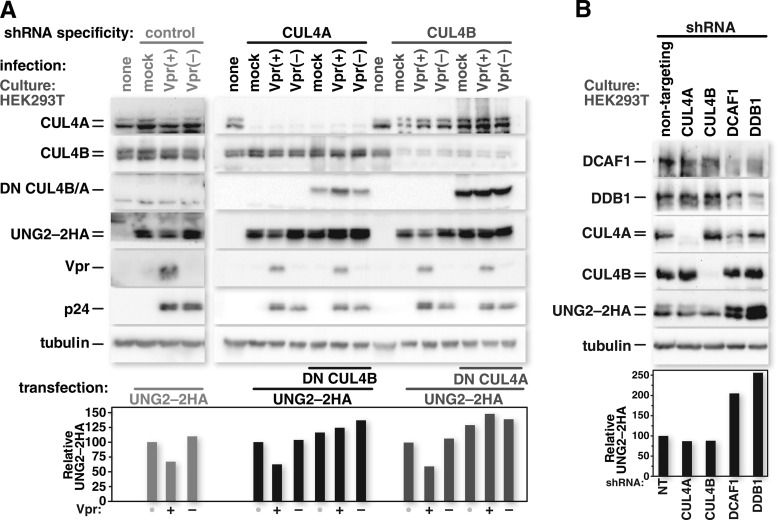FIG 4.
HIV-1 Vpr-mediated UNG2 degradation and constitutive UNG2 turnover are not specifically dependent on CUL4A or CUL4B. (A) HEK293T cells that stably express a control shRNA were transfected with an expression vector for UNG2-2HA. HEK293T cells that stably express shRNA targeting CUL4A or CUL4B mRNA were transfected with an expression vector for UNG2-2HA together with either an empty expression vector or one for an HA-tagged dominant negative version of the abundant CUL4 type. Twenty-four hours after transfection, the cells were mock infected or infected with HIV-1 or HIV-1 lacking Vpr. Forty-eight hours after infection, the cells were harvested and lysed. Cell lysates were resolved by SDS-PAGE and probed for CUL4A, CUL4B, tubulin, the HA epitope, HIV-1 p24, and HIV-1 Vpr by Western blotting using the corresponding antibodies. (B) HEK293T cells stably carrying doxycycline-inducible shRNA cassettes specific for CRL4 components were induced to express their respective shRNAs for 5 days. CRL4-depleted HEK293T cells were then transfected with the UNG2-2HA expression vector and harvested 72 h after transfection. Cell lysates were resolved by SDS-PAGE, and Western blots were probed for specific CRL4 components and the HA epitope by using the corresponding antibodies. Densitometric measurements performed on the UNG2-2HA bands were normalized to the values of the respective tubulin bands. The relative intensities of the UNG2-2HA bands were graphed based on the values obtained from the densitometric analysis.

